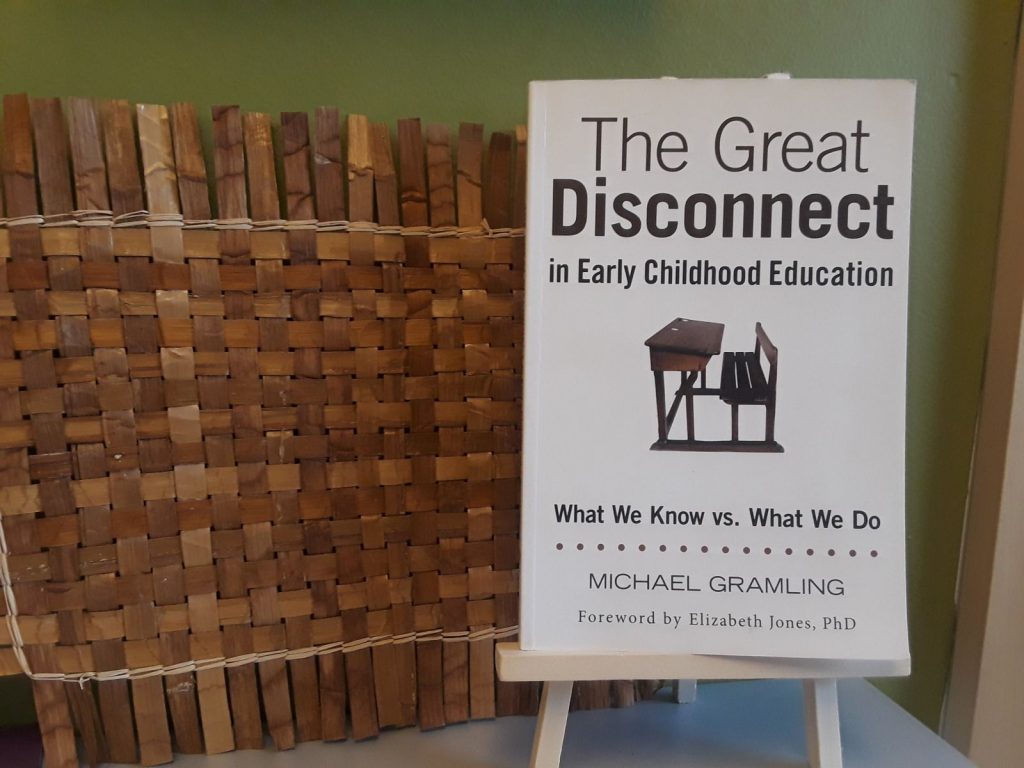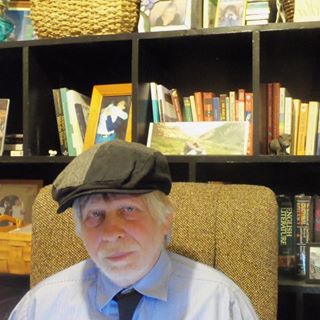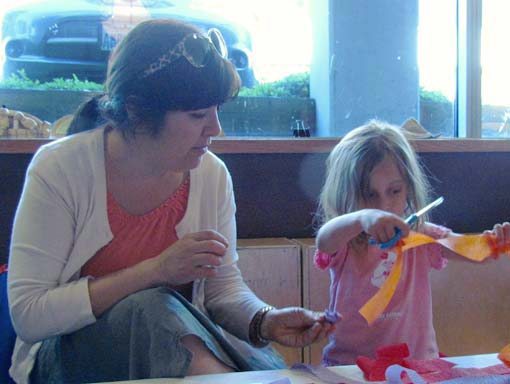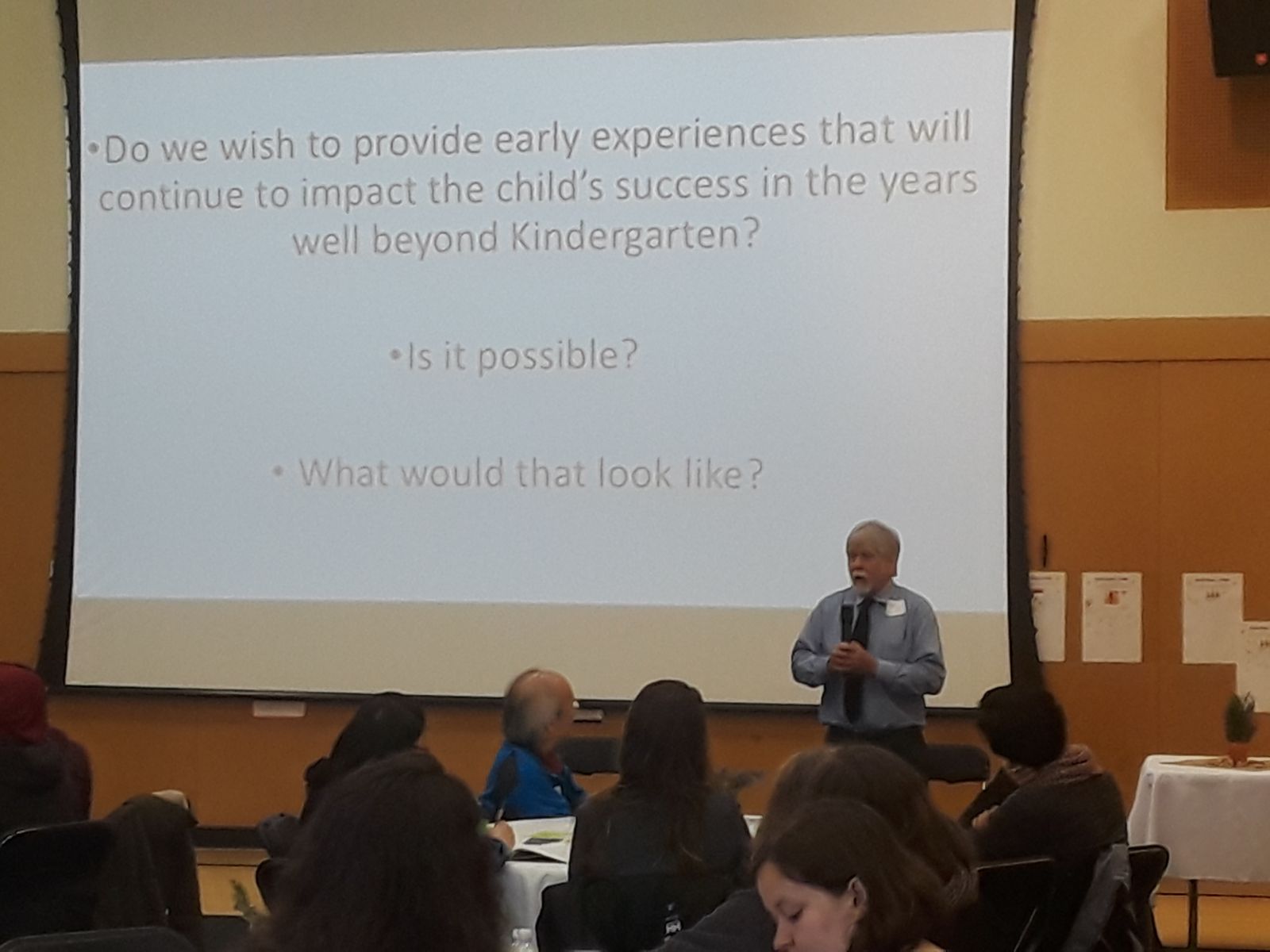
Seeking Equity Through Language-Rich Classrooms Event Recap and Classroom Strategies
By Mike Browne, Chelsea Myers, and Layla Rowen from Hilltop Children’s Center and Hilltop Educator Institute
“Before the event, I had been thinking about my relationship with a couple of my children and how much I wasn’t loving my reactions to them. Basically, I was feeling like a grumpy nag and feeling very aware that I was working against my own interests let alone theirs. Michael’s advice about ‘unconditional positive regard’ struck such a deep chord for me. I knew I needed to shift my behaviors and that phrase just really pointed me in the direction I wanted to go but hadn’t had the words for. I came in Tuesday with that as my goal and my week has been so so so so so different and so much better. Even when I do have to get up in their business, I am working on ways that I still verbalize to them how I see their goodness and show them love.”
– Chelsea Myers, Educator with 3 –to-5 year olds at Hilltop.
On Saturday, April 7th, 2018 Michael Gramling, from Western Kentucky University presented in front of nearly 60 educators, caregivers, childcare providers, and city officials about “The Great Disconnect in Early Childhood Education” and how we can seek equity through language rich classrooms.
According to Gramling’s research, a great deal of evidence points to the critical importance of exposure to rich language during the first five years of life, and how much has been made of the “word gap” between low income and more affluent homes to explain disparities in academic performance. However, there is a disconnect between what we know about children’s learning and development, and what we actually do in our day-to-day work. Much of this disconnect stems from the ideological shift from “setting children up for success in life” to “setting children up for success in school.” Gramling argued that we have been so caught up in academic standards and teaching children to pass tests that we have confused:
- child development with early learning
- assessment with instruction
- information with experience
Trust the Process
To address the inequities in early childhood education, we first must “trust the process” a phrase Gramling used several times on April 7th. That process includes three vital components: relationships, language, and cognitive development.
Relationships:
What we know:
- Relationships matter as does learning in relationships! Language rich environments and emotional support are not dependent on income.
What we can do:
- value children for who they are
- include children in real-world conversations, and use the children’s own experiences and interests as subjects for discourse
- focus on social learning within the classroom community (authentic experiences are free!)
- be responsive to children’s dispositions, abilities, interests and needs
- build resilience by giving children a voice so they can advocate for themselves, and use the necessary skills to access information, services and education
What we actually do:
“Driven by performance objectives, teachers view children not as people with whom they are building relationships, but as walking, talking sets of deficits that need fixing. As a result, most interactions between teacher and child become bereft of any authentic human quality and take on instead a stilted, ritualized quality that is unique to the world of early childhood education.” – Gramling
Language:
What we know:
- Many low-income children from birth to five suffer language deprivation. The effects of the word gap cannot be easily remedied by later interventions. An informed and empowered parent is essential, even more so than teachers, to help decrease the word gap. It takes a unified effort to nurture and develop our children.
What we can do:
- develop policies that support family involvement, and shed light on the impact talking, singing, and reading to children can have over their lifetime
- embrace a child’s home language – school readiness and success for children who are dual or multi language learners is tied directly to mastery of their home language
- Facilitate ‘thick’ conversations – giving children many chances to speak and communicate, by asking open-ended questions, encouraging them to think and imagine, and having many back-and-forth exchanges.
What we actually do:
“In part, because families underestimate their child’s ability to learn and think is precisely why they inadvertently provide such rich language. They assume they can talk over their child’s head with no consequence. Ironically, in standards-driven early childhood education, the child is also completely underestimated, but with results that are completely opposite: he is not provided with rich language at all, but is exposed to tiny sound bites. For example, in order to “teach” the precocious four-year-old who eavesdropped on his sister words that describe human emotion, the curriculum will provide the teacher with a lesson plan that says, “The child will identify pictures of people who are sad and happy…Although the child’s developing brain absorbs information like a sponge just waiting to be totally immersed in language, in standards-driven early childhood education, we dispense language with an eye dropper.” – Gramling
Cognitive Development:
What we know:
- During infancy and toddlerhood, young children are almost always able to understand far many more words than they can speak. Children become increasingly skilled at remembering and practicing the language modeled around them, as well as modifying word use based on other people’s reactions.
What we can do:
- distribute learning in an environment of other people, objects, and culturally structured events.
- be mindful of our sociocultural beliefs about gender, and about how language may influence children’s social competence.
- Use contextual semantic elements within networks of meaning, both classifiers and related nouns and predicates, to help children acquire new words and word meanings –
What we actually do:
“We act as if all preschool programs have no value to children other than providing a dress rehearsal for real school…The development chasm between four-year-old and five-year-old is deep and wide and cannot be crossed simply by writing lessons plans and objectives that try to will children into maturity.” – Gramling
Inequity from the Beginning

As the afternoon continued, Gramling took the time to shed some insight on how exactly we got to this point. Gramling highlighted the following inequities in early childhood education (ECE) and home-life which all have significant impacts on brain development in young children:
- Nutrition/hunger
- Health/dental care / dental
- Developmental disability screenings (or lack of)
- Toxic stress including chaos and trauma
- Language deprivation
In order to achieve life-long success, Gramling strongly advocates for all to “push back on K-Readiness” in order to refocus our classrooms on “brain development.” These “developmental prerequisites” set the foundation for life-long success and should include a focus on:
- Executive Function: Social-emotional developmental tasks (managing emotions, controlling impulses etc).
- Empathy (the causes, effects, and behavioral cues characteristic of various emotions).
- Identity (self-concept).
- Trust (provide rich experiences that shape their self-awareness, validate their personalities, teach them to manage their own behavior, and shape their personalities).
In the process, children will learn the social skills (and acquire the language) that the government identifies as necessary for Kindergarten, such as taking turns, sharing, resolving conflict, following directions. These traits are cultivated in classrooms that are responsive. When a child consistently struggles to follow instructions, instead of pointing to behavioral issues which disproportionately result in suspension for children of color, administrators should look to assess the responsiveness of their program and classrooms. Defiance, according to Gramling, is more often than not a necessary response to a situation rather than a behavior issue. In short, responsive practice and “unconditional positive regard” support the emotional development of both boys and girls, which sets them up for success later in life.
What Can Adults Do?
So where does this leave us? What could we be doing to help children learn language? As the afternoon concluded, Gramling left us with various ideas on how we can help close the “word gap”:
- Thinking out loud is a strategy that allows you to extend the learning outside the classroom by creating valuable learning experiences throughout your day. For example, at the grocery store, verbalize your shopping list, read the labels off the cans, and explain to your child what you are planning to do with your items.
- Self-Talk is a strategy in which the adult describes what he or she is doing. The adult provides the words to describe their actions. For example “I’m sitting down at the table next to Carlos. I want to see what Carlos is doing with the play dough.”
- Parallel Talk is a technique in which the adult describes what the child is doing or seeing. When an adult uses Parallel Talk, they are acting like a broadcaster. For example “Tanisha, you really hate to see your mom leave! You are feeling very sad. You wish that she could stay with you.” For children who love to ask “why” (and yes, the why actually matters to the child), Parallel Talk is a great way to answer their question before they ask it. For example, as you are going to the playground and your child is putting on their coat, you might say “Tanisha, you’re putting on your coat, and buttoning it up, you’ll be glad when the wind hits you.”
- Put words in your child’s mouth is a strategy that both encourages use of language and exposes your child to the use of languages in various contexts.Ask ‘Why’- the why question is always there when we communicate authentically. By asking why, your child is forced to critically think and communicate thus taking an active role in their learning.
- “Talk to the volleyball” is a strategy self-coined by Gramling himself. It’s based on the scenes with “Wilson” the volleyball in the movie “Cast Away.” Talk to the child despite the child not being able to respond (like Wilson). Use emotions, use hand gestures, but most importantly talk to children like people.
Ideas from Hilltop Classrooms
 At Hilltop, we believe it is important to honor children’s questions. While it is sometimes difficult, we strive to avoid the temptation of jumping right in to answer their question, and instead, take the time ask the child about what they already know, and what possible ideas they already have about the answer. Why do we do this? Because it gives the child the opportunity to clarify what they’re trying to figure out, and to consider strategies for learning what they want to know. Often they can come to a deeper understanding through play with materials and debate with their friends than they would have if we simply offer them quick answers to their questions.
At Hilltop, we believe it is important to honor children’s questions. While it is sometimes difficult, we strive to avoid the temptation of jumping right in to answer their question, and instead, take the time ask the child about what they already know, and what possible ideas they already have about the answer. Why do we do this? Because it gives the child the opportunity to clarify what they’re trying to figure out, and to consider strategies for learning what they want to know. Often they can come to a deeper understanding through play with materials and debate with their friends than they would have if we simply offer them quick answers to their questions.
At Hilltop, children freely access different parts of the room throughout the day. As educators, we conscientiously avoid doing “drive by” (disinterested, disengaged) check-ins with children. Those meaningless interruptions disrupt their creative play and offer little to no added value. Much like what Gramling said, we find that this “free access” to materials and activities encourages children to be confident and successful in the places that they feel most comfortable.
At Hilltop, in an effort to facilitate authentic conversation, we integrate the use of a variety of materials (sensory, constructive, artistic, natural, flexible, and so on) to be able to introduce new and complex vocabulary to our children.
By being descriptive in our speech, as children work with these materials, we can offer words that children may not yet know, and we avoid the trap of “dumbing down”our language. These authentic interchanges help children pick up new vocabulary and practice verbal and conversational skills at a crucial time in their lives, and is consistent with Hilltop’s image of children as competent and capable human beings.
Why focus on Kindergarten readiness, when we could be seeking language equity for lifelong success?
“Because kindergarten readiness is measured by the child’s knowledge of a few facts while school success is dependent on the child’s ability to engage in complex communication, these children will fall further and further behind every year. They will learn how to decode print but not know how to use it to express their thoughts and their experiences or how to comprehend the ideas and experiences of others. ” – Gramling
In conclusion, talk to children like people.
If we wouldn’t say it to a grown-up, then why are we saying it to children? As adults working with children, we shouldn’t be teaching them what words mean but instead how to use them. It’s a conversation we are having with them, not an interview. When a child asks a question, makes a comment or shares an experience, we should reciprocate it, as if the child were a person. We should share our experiences and ideas and respond accordingly when the child shares theirs.
Reflections from Layla, an educator with 2-to-3 year olds at Hilltop
In which ways do you remind yourself to talk to children like people?
“Intentionally inserting my stories into conversations doesn’t feel automatic yet, but I know that in conversations with adults, I do occasionally insert stories. This reinforces to me that I do not talk to children the same way that I talk to adults.”
Have you tried to implement any of these strategies into your classroom?
“We’ve recently switched our morning inside/outside time to allow more equitable access to inside free-play time. Children that regularly show up after 9 am had usually been arriving just in time for clean up and then potty jobs at around 9:30, then rushed to morning meeting, getting ready for outside, and then transitioned out of the classroom by 10:15. Now they are dropped off at the playground before coming in for about an hour of free play before a flexible, somewhat child-led transition to lunch. The more flexible, relaxed time allows us all to have more casual, respectful conversations.
At snack time inside, we also have a moment to briefly talk about what kids want to do in the classroom when they’re done eating, in addition to any teacher-planned group activities.”
Do you have any professional experiences, advice or ideas you can share on how to apply Gramling’s ideas when you have to comply with any state / federal mandated assessment models (ECERS, Early Achievers, etc.)?
“When I worked with an Early Achievers classroom, the data collection for the assessment process had a lot in common with Hilltop educators’ documentation process. In the EA classroom, the conversations and moments I had with the children would be documented in writing and photos, much like we do our documentation at Hilltop, but with Early Achievers the data collected was reflected upon later to be formatted and matched up with “Teaching Strategies Gold” checklist items and electronic documentation snippets, instead of learning stories, pedagogical documentation, and in-depth investigations, etc. However, I could see Gramling’s message meshing with Early Achievers schools’ requirements, as with our own, more than initial inspection might reveal because much of his plea for our engagement with children is around how we talk to, with, and about them.”
About Hilltop Educator Institute
Hilltop Educator Institute collaborates regularly with speakers across North America, Europe and New Zealand to provide professional development opportunities in Greater Seattle through evening, half-day and full day workshops known as the Educator Discussion Series (EDS). Hilltop Educator Institute provides resources and support to educators, programs leaders, children’s advocates, and the community at large, in order to widen access and opportunity for all children. To study at Hilltop for a day, register for upcoming workshops, or learn more about our services, email Mike at institute@hilltopcc.org or visit us at www.hilltopcc.com/institute.
2 thoughts on “Seeking Equity Through Language-Rich Classrooms Event Recap and Classroom Strategies”
Comments are closed.

Wow. Sounds like an awesome day! Such a fantastic recap for all of us who weren’t able to be there. I’ve highlighted various sections and am excited to put them to use. Thank you!!
Thanks Emily! Just because you couldn’t make the workshop, doesn’t mean you should still have the resources and information that came from it! The sharing of rich resources is something we should all try to do. Glad you enjoyed, highlighted some of the text, and can put them into use. 🙂 – Mike